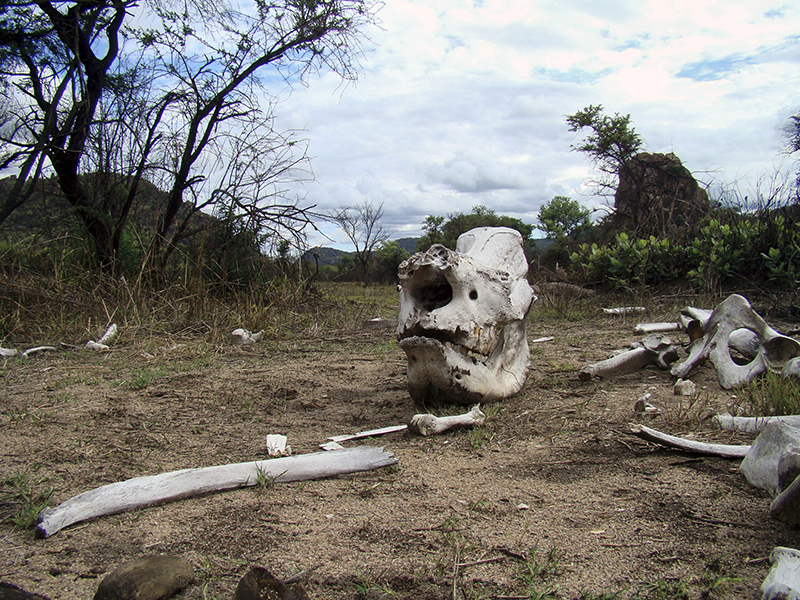Black Market Trading
RHINO HORN DEMAND
Many cultures in Asia (particularly China and Vietnam) value rhino horn as a potent traditional medicine – where it is ground down to a powder used in tonics mixed by traditional healers.
The superstition further claims that the root of the horn (about 12% of the horn’s core at the base) contains the medicinal properties.
This has led to rampant rhino poaching in Africa, which is rapidly pushing the species dangerously close to extinction. Ironically, a rhino horn regrows, and can safely be cut off. But, in order to get to the thicker base of the horn, poachers greedily cut deep into the rhinos’ skin – leaving it very little to no chance of survival.
Rhino horn is made of keratin, the same substance as hair, fingernails, and toenails. There isn’t any medicinal, nutritional, or any aphrodisiac value to it at all.
The superstition further claims that the root of the horn (about 12% of the horn’s core at the base) contains the medicinal properties.
This has led to rampant rhino poaching in Africa, which is rapidly pushing the species dangerously close to extinction. Ironically, a rhino horn regrows, and can safely be cut off. But, in order to get to the thicker base of the horn, poachers greedily cut deep into the rhinos’ skin – leaving it very little to no chance of survival.
Rhino horn is made of keratin, the same substance as hair, fingernails, and toenails. There isn’t any medicinal, nutritional, or any aphrodisiac value to it at all.

8 HOURS
On average, one rhino is killed every hours for its horn.
1 000 RHINOS
1 000+ rhinos were killed in 2015 in South Africa alone.
More Valuable Than Gold
TRADE VALUE
Rhino horn is estimated to be worth $65,000 per kg on the Asian black market – making it more valuable than gold. Poachers will thus go to incredible lengths to get their hands on rhino horn.
Criminal gangs are willing to invest time and money in their schemes – posing as tourists or paying others to pose as tourists to gain intel on reserves and conservations. They use drones, satellites, and helicopters to locate and track rhinos (even using conservationists’ own satellite tags on individuals by bribing vets). They also spare no expense in outfitting poachers with sedative drugs and automatic weapons.
Poachers usually enter a reserve or conservation on foot with military-like precision. Once they’ve located and darted a rhino, they'll and chase it into a remote area. They don’t discriminate – young or old, male or female with calf or not.
They’re well equipped and ruthless. If they don’t kill their victim, they mutilate it and leave it for dead to often wander for days with half their face hacked into, before succumbing to their injuries. Mothers with calves aren’t spared any of this cruelty, and calves are often killed too, so their cries don’t attract attention.
For this reason, rhinos are routinely dehorned to protect them.
At Rockwood, our rhinos are so well-protected that we can let them roam freely with their horns intact – as nature intended.
Criminal gangs are willing to invest time and money in their schemes – posing as tourists or paying others to pose as tourists to gain intel on reserves and conservations. They use drones, satellites, and helicopters to locate and track rhinos (even using conservationists’ own satellite tags on individuals by bribing vets). They also spare no expense in outfitting poachers with sedative drugs and automatic weapons.
Poachers usually enter a reserve or conservation on foot with military-like precision. Once they’ve located and darted a rhino, they'll and chase it into a remote area. They don’t discriminate – young or old, male or female with calf or not.
They’re well equipped and ruthless. If they don’t kill their victim, they mutilate it and leave it for dead to often wander for days with half their face hacked into, before succumbing to their injuries. Mothers with calves aren’t spared any of this cruelty, and calves are often killed too, so their cries don’t attract attention.
For this reason, rhinos are routinely dehorned to protect them.
At Rockwood, our rhinos are so well-protected that we can let them roam freely with their horns intact – as nature intended.


